Cao Xueqin's former residence in Beijing was "resurrected", did he really write "Dream of Red Mansions" here?
Author:China News Weekly Time:2022.09.10

It has been lost in 40 years, demolished and rebuilt
Now, the new courtyard of this remittance is rebuilt
What is the relationship with Cao Xueqin?

84 -year -old Zhang Shu was standing under the scorching sun and witnessed the completion ceremony of the new courtyard in front of him. With the red cloth on the plaque, several characters of the "Cao Xueqin's former Residence Memorial Hall" officially appeared. This day is July 29, 2022. Forty years ago, he found this place for the first time. The only old residence of Cao Xueqin had a testable old residence.
However, the new courtyard he found in that year was actually 100 meters away from this new yard, which is located on the crossroads of Chongwenmen Wai Street and Guangqumen inner streets. More than 20 years ago, in order to build Liangguang Road, on the premise that the relevant departments promised to reconnect the old residence, the yard of the old residence was demolished. No one wanted to get it. Later, the road to reconstruction broke down for more than 20 years.
Compared with the great reputation of Cao Xueqin's future generations, the literature records and relics are not proportional. The only former residence of the Cao family outside Chongwen Gate, which was examined, was particularly valued, but the exact address around the old residence has not stopped the dispute so far.
On the day of the "Cao Xueqin's Former Residence Memorial Hall", Zhang Shucai walked in the new yard, feeling smaller than the house he visited that year. The courtyard resumed into a three -entry hospital in accordance with the pattern of the Qing Dynasty, and it was deployed into five exhibition halls and a space for activity. It is holding an exhibition related to Cao Xueqin, such as "Return to Beijing Division", "Dreaming Garlic City" and "One Dream of Red Mansions".
In 40 years, it was lost, demolished and rebuilt. What is the relationship between this new courtyard that is replaced by this site?
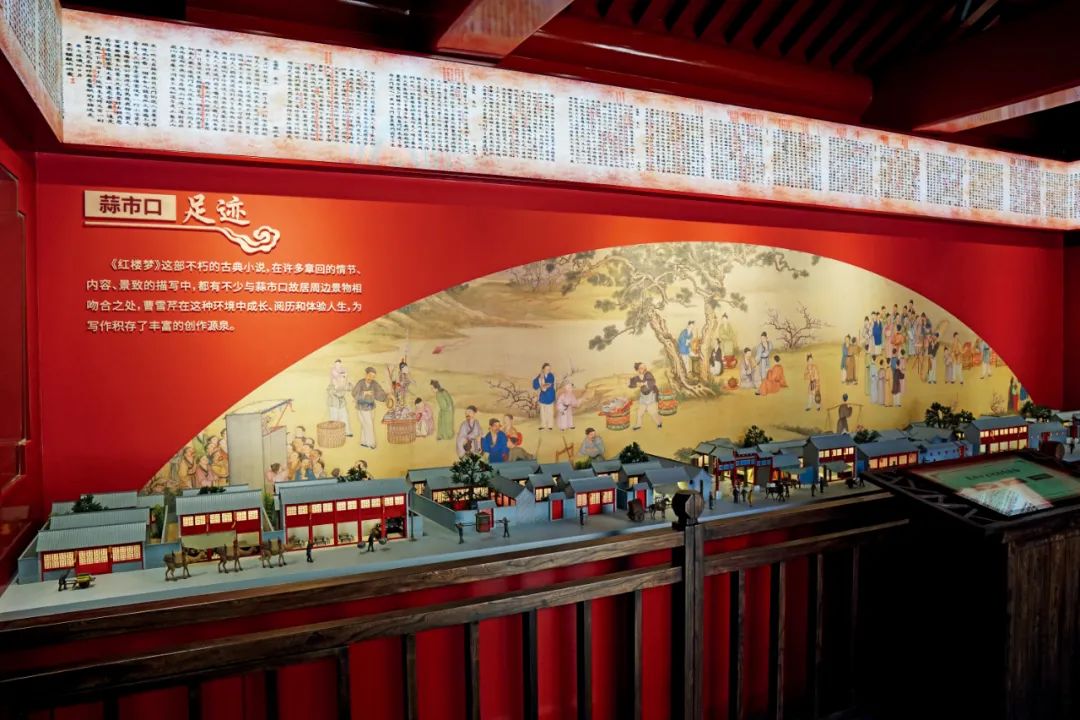
Cao Xueqin's former residence commemorative hall restored the landscape of Cao Xueqin's life during the life of Cao Xueqin. Photography/Reporter Ni Wei
In 1728, he entered Beijing
In the summer of Yongzheng, the young Cao Xueqin returned from Jiangning (now Nanjing) with her grandmother. They went up the Grand Canal and got off the ship at Zhangjiawan Wharf in Tongxian. Since then, he bid farewell to the years of Jinyi Yu Food. This is the first time Cao Xueqin has come to Beijing.
The Cao family had some assets such as pawnshop, fields, and dyeing workshops in Zhangjiawan, but at this time, they had been punished. Jiang Ning woven the poor Cao family's "lady weak and could not live". After playing the Ming Emperor Yongzheng, she returned the seventeen and a half yard of the garlic market outside Chongwenmen from the property that was punished. Three pairs.
The change happened six months ago. In the fifth year of Yongzheng (January 1728), Uncle Cao Xueqin and Jiang Ning woven Cao Chuan to be convicted of harassment stations, deficit, and transfer finance. The family property and population of the Cao family in Beijing and Jiangsu were all punished. The Cao family of the Wang tribe, which is prominent for nearly sixty years, has fallen in this house.
Cao's father, Cao Yin, was the accompaniment of Emperor Kangxi in his childhood. Cao Yin's mother was Kangxi's nurse. Because of this layer of origin, Emperor Kangxi had deep feelings for the Cao family. Later, Cao Yin was appointed as Jiang Ning woven. It was both fat and the eyes that were able to communicate directly with the emperor. When the most prominent time, Cao Yin also served as the history of the two Huaihua patrols, and Suzhou, who was also one of the "Jiangnan San Weisha", was the inner brother of Cao Yin. Kangxi's sixth tour of the south and lived in Jiangning's weaving four times. After Cao Yin's death, Cao Lian succeeded his father's position. However, when the Yongzheng ascended the throne, he was not as good as the Cao family.
Later, Cao Xueqin wrote "A Dream of Red Mansions", and wrote about Yuan Fei's provincial relatives and Zhao Rongguo's shocks. Perhaps there were the shadow of the Cao family.
During the seventeen and a half period of living in the mouth of the garlic city, Cao Xueqin began to work in Beijing. He and his aunt's house, Pingjun Palace (now in Beijing Second Experimental Primary School), moved frequently. Red scholar Hu Wenbin once proposed that the family history of Pingjun Wangfu and the deeds of Fu Peng, as the material, incorporated into the "Dream of Red Mansions". In the story, the handsome teenager Bei Jingwang has the shadow of Fu Peng. Cao Xueqin also entered the right -wing scholarship (located in Xidan Shihu Hutong) who collected the children of the flags. Here I met the two brothers of Dunmin and Duncheng, who left, and the latter. material.
Later, Cao Xueqin moved to Huangye Village in Xishan. On New Year's Eve, he died in the cold winter of the lunar month. Where is his old residence in Beijing? No one knows for many years, and no one cares.
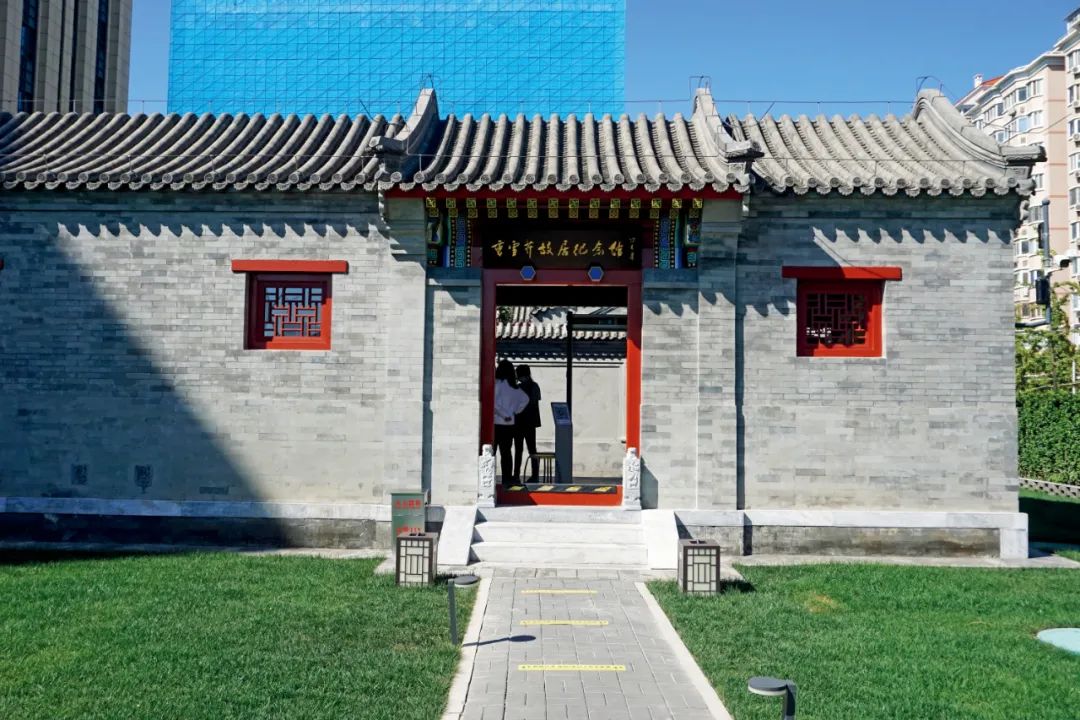
Cao Xueqin's former residence Memorial Hall. The Memorial Hall has restored the pattern of the Sanjin Academy and sets up five exhibition halls and a space for activity. Photography/Reporter Ni Wei
In 1982, the former residence reproduced
In 1982, Zhang Shucai had worked in China's first historical archives for 10 years. Feng Qiyong and other red studies often came to the museum to find files related to the Cao clan. In the eyes, Zhang Shucai also knew a little about the Red Studies. In those years, the research of red studies was hot, and Gengchen's "Dream of Red Mansions" was sorting out. One day, he found the archives of the Qing Dynasty in the museum, and inadvertently discovered a "criminal movement" of the seventh year of Yongzheng (1729), which recorded Cao Yin's wife to return to Beijing. "Seventeen and a half rooms". This 500 -word file has opened a hot topic of red studies for decades.
Zhang Shucai found a full picture of the Qianlong period, and it was easy to find Harry City Street outside Chongwen Gate. This is a small street with east to west, about 200 meters long. From the picture, it can be clearly seen that the courtyard south of Hangshukou Street is very empty, and it should be the car and horse inn or shops. The four courtyards in the middle of the north of the road are the two -entry or three -entry courtyard of the layout. He initially inferred that the old house of the Cao family may be one of these four yards. "Archaeological on the paper" came to an end, and Zhang Shu came to the field of Chongwen Gate to investigate. The name of the garlic mouth has been ancient, and it is now called Guangqu Gate Street. He watched the courtyards of Lubei from the west and eastward. Among them, No. 207, No. 207, Guangqumen Inner Street (ie, No. 16 Harry City in the Map) was originally a private house in the Ma Family. It has been bought in the Tao year for 1880 years. Zhang Shucai saw that there were four tall screen doors standing against the wall in the doorway, and there was a word in the middle of the door panel. Ma Yunsheng said that the middle courtyard house originally had the horizontal plaque of "韫 马 怀 马". Zhang Shucai guessed that the names of Jia Baoyu and Jia Zhu may be related to this.
However, due to previous reconstruction, Ma Zhai has not been a "seventeen and a half" pattern at all. However, a small corner of the courtyard attracted Zhang Shucai's attention: there was a section of the courtyard wall in the northwest corner of the backyard. In the "Complete Map of Beijing", the third courtyard of the north east of Hangkou Street has this characteristic. He counted the original house of this yard in the "Complete Map of Beijing": eighteen rooms. Is there a half of the eighteen houses?
After some research and survey, Zhang Shucai believed that the No. 16 Courtyard of Garlic City should be Cao Xueqin's former residence. He also kept the room cautious: "At least it has greater possibilities than the other courtyards."
When Cao Xueqin lived at the mouth of the garlic city, Chongwenmen was a lively middle and lower society. Every day, business travel in the north and north held a market temple fair. On the streets, they crossed the wall and hooked the hearts of women and children in the wall. Several streets are flyover, juggling, artistic, singing drums and lotus falling on the roadside performance. As Zhang Shucai said, this is "a seminizative area of vendor farmers, beggars, marketing heroes, and even monks and priests, three religions and nine streams." It is here that the youth Cao Xueqin went deep into the market and tasted the bitterness of life. This has an irreplaceable role in the growth and accumulation of his thoughts and the accumulation of creation.
In 1991, Zhang Shu proposed the idea of restoration of Cao Xueqin's former residence and establishing Cao Xueqin's former residence Memorial Hall. He imagined that the east side was "Cao Xueqin's former residence" and repaired seventeen and a half rooms in accordance with the "Full Map of Beijing"; a "" Dream of Red Mansions "on the west side of the former residence can be built for red studies and exchange.
Unexpectedly, the memorial has not yet been implemented, and the yard was removed.
Cao Xueqin's "Cao's Four Shi Shi Food List" displayed in the former residence of Cao Xueqin. Photography/Reporter Ni Wei
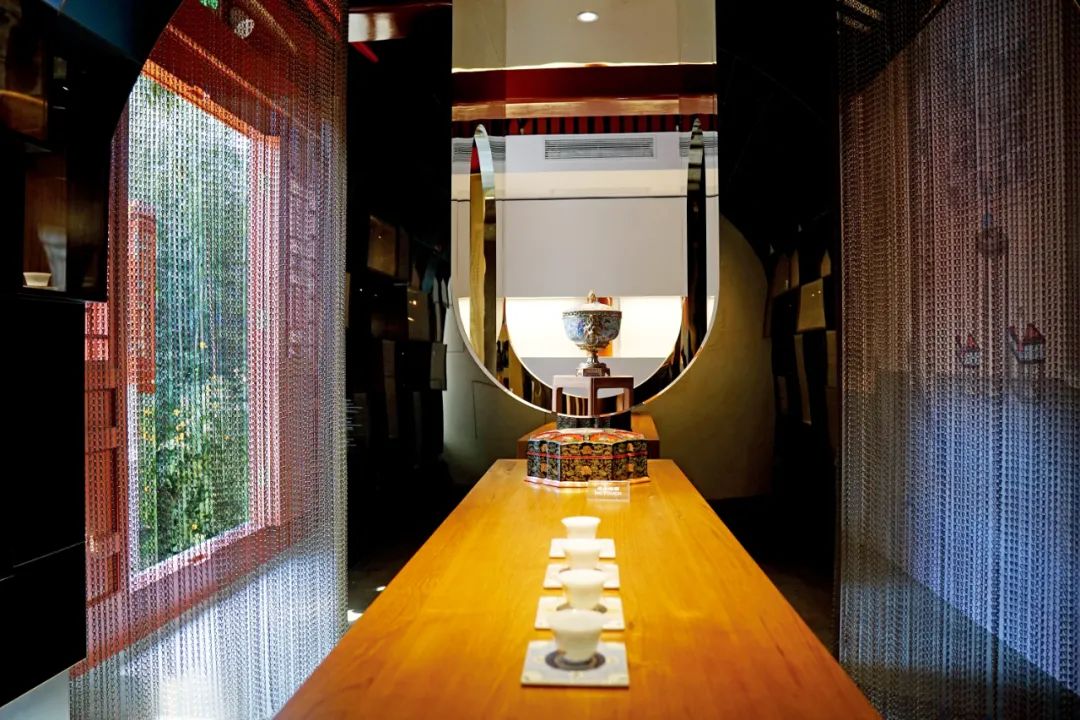
In 1999, demolished in urban construction
On June 8, 1999, Longyin Pavilion, Longtan Park, the CPPCC of the Chongwen District of Beijing, the Beijing CPPCC, and the Chinese Red Society jointly held a seminar of the Cao Xueqin's former residence. Feng Qiyong, president of the Red Society, participated in the meeting and sent twice at the meeting. He said that the Red School believes that it is true that the seventeen and semi -old houses in the mouth of the garlic market are made in truth. He also said that the roads in the streets of Guangqumen must be expanded and houses should be demolished. "We must take this seriously and rebuild Cao Xueqin's former residence.
After the news of the seminar was made public, this old residence became a hot spot for the visit of red studies. Many people were not far away and saw it last. Since No. 207, Guangqumen Street, it was located in the planned red line, and it was not yet registered as a Wenbao unit. Although many sounds are required to be retained, this yard has been demolished a year later. At that time, it was the climax of the renovation of the old city of Beijing. Cultural relics such as Zhao Luoyu's former residence and eastern Guangdong New Museum were demolished and caused great social response. Seventeen and a half stays in the mouth of the garlic market have also received much attention.
In August 2001, Liangguang Road was opened to traffic. After that, members of the Democratic Party sent by the Democratic Party and members of the CPPCC repeatedly made suggestions to the former residence of Cao Xueqin as soon as possible. In 2002, the No. 207 Courtyard of Guangqumen Inner Street, which was no longer existed, was listed as the former Cultural Relics Registration Project of Chongwen District. Two years later, the Cao Xueqin's former residence Memorial Hall was officially established, but since then, it was silent.
Some people have never forgotten this. In 2007, Song Weizu, member of the Standing Committee of the Beijing CPPCC and deputy director of the Social Law Committee, was elected as a member of the Chongwen District CPPCC. When Wang Jinzhong, the chairman of the Chongwen District Working Committee of the Democratic League, expired when the CPPCC was in his term. To him, we must continue to promote the recovery of the seventeen half -Cao Xueqin's former residence of the garlic market outside Chongwenmen. This is the first time that Song Xunzu has learned about the former residence. He had previously focused on environmental protection and industrial design industries. He suddenly discovered that the yard, which was no longer existing, was only half -standing with the old house next to him who lived from a young man. When he was a child, he and his friends often ran to this yard, and he drank cold water from the faucet at the gate. He still remembers that there are five steps in front of the gate, with rectangular door strokes at the door, and the doorway stands on the west wall with a huge screen with four green bottoms, which reads the words "Duan Fang Right". "Each screen is nearly two meters high, sixty or seventy centimeters wide. Each word height is on my head."
A personal emotion is infused into this task. In the first few years, Song Weizu was a little confused. Everyone knew this and the government was very concerned, but he did not progress. He did not know how to advance. "I hope someone can tell me what to meet. As a member of the CPPCC and the people's congress representatives should write proposals and suggestions. "In a few years, he was writing proposals and suggestions every year. The relevant departments also responded to him every year, but still did not progress significantly. In 2010, Chongwen District and Dongcheng District merged into a new Dongcheng District, and everything was busy at the beginning of the merger. Fortunately, in 2010 and 2011, Cao Xueqin's former residence was re -construction and wrote a work report for the work of the Dongcheng District Government for two consecutive years. He felt relieved.
After year and after year, he gradually explored the direction of the proposal and wrote proposals for the symptoms in the reconstruction process: at the beginning, it was the problem of adjusting land use planning, and later it was the issue of property rights and funds. The delineated old residence reconstruction location, part of the property rights belong to the new world company, there are K11 projects of the new world next to it, and the other part of the land was sold to another company by bidding, The home company has the land that has property rights, and the regulations have continued to coordinate for several years. When the negotiation is completed, the Metro Line VII will set up a station nearby, and the reconnaissance location has become the site and construction site for the construction of the subway station.
Song Xunzu said that a small courtyard, if only as a building, is to build a house, everyone thinks it is not difficult. However, the reconstruction of cultural relics involves the planning, land, transportation, cultural relics and other departments, as well as enterprises of the two -level governments in the urban area, and other issues, as well as enterprises, involves many issues such as policies, regulations, funds, municipalities, and infrastructure. The government's general change every five years is when he is particularly upset, he is afraid that he will be forgotten as soon as he changes. "China is in a high -speed development period, and many new things are going to do in a general change." He said.
By 2016, Song Weizu had promoted this incident for 10 consecutive years. At the two sessions of Beijing, the "big proposal" with more than ten proposals and suggestions each year was at least one about the recovery and use of Cao Xueqin's former residence. In the tenth year, he was a little tired, and he was still proposal and appealing every year, but the re -reporting report was always similar. "I think, if I don't mention it, everyone may always forget this. I must Perseverance, this is responsibility. "In the past few years, he carefully paid attention to various cultural development orientation and policies -cultural self -confidence, historical and cultural city protection, Beijing central axis application, national cultural center construction, let cultural relics live, build construction, construction The city of the museum ... "蹭" up the restoration of the former residence, explaining its meaning from various angles, and shouting to appear at the best opportunity to reconnect this former residence.
This is still the year in 2019. At the two sessions of Beijing in January, Song Weizu, a member of the CPPCC, still called for his former residence for his former residence, but he felt that there would be no difference in the results. He didn't know that the restoration of the former residence had been on the string. At the end of the year, the subway station was finally capped.
As soon as the two sessions ended, he received a call from the Dongcheng District Cultural Tourism Bureau and asked him to participate in the foundation ceremony of the reconstruction of the Cao Xueqin Memorial Museum on January 23. Early in the morning, he solemnly put on the formal dress of the Chinese stand -up collar, and a delicate cashmere coat was covered on the outside to shovel the first soil for the memorial hall.
In September 2022, Zhang Shucai, the earliest discoverer of Cao Xueqin's old residence, "Seventeen Half of Garlic City". Photography/Reporter Ni Wei
In 2022, the old residence was reborn
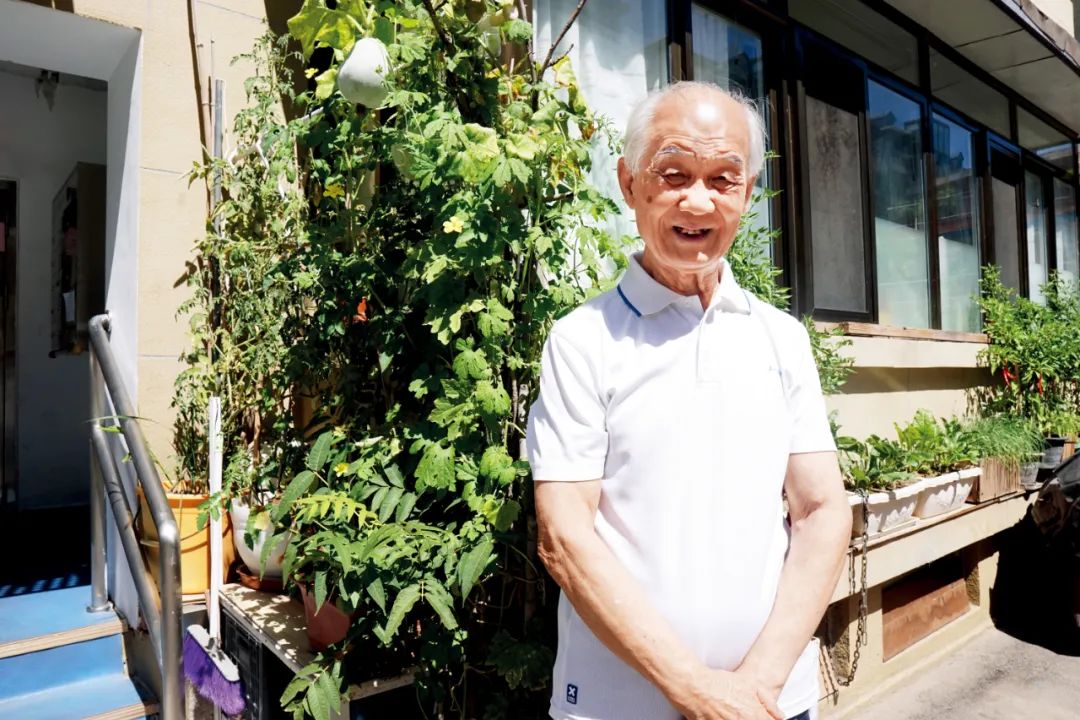
Cao Xueqin's former residence museum is like a gray square box, which is placed on the east side of the two high -profile strokes. Opposite the oblique is an exit of the Magnetic Metro Station. The original site was 60 meters north and 100 meters east.
The courtyard restores the three -entry pattern in accordance with Qianlong's "Beijing Full Map". All the five houses of the first two courtyards are set up as exhibition halls, showing the historical history of the former residence, the cultural knowledge of the Dream of Red Mansions, and the story of the Cao family. Supplemented with a little antique furniture and other real objects. The yard is not large, covering an area of 790 square meters and a construction area of 440 square meters. Even if each exhibition hall is carefully seen, it is finished in half an hour. The last house in the hospital was closed. Through the glass, you can see a long table and a circle of wooden chairs. The bookshelf leaned on the wall was coded with script killing boxes. The interpreter told the audience that it will be used as an event space, and activities such as the Cao's kite production experience and the lecture of red studies will be held.
The Cao Xueqin's former residence Memorial Hall adopts a social operation model. The property rights belong to the Beijing Dongcheng District Cultural Tourism Bureau. The K11 Beijing under the New World Group is responsible for operation management. Mu Cong, the person in charge of the operating of the memorial hall and the K11 Beijing operating manager, told China News Weekly that the memorial set the academic committee, hoping to use the power of the academic community to organize the activities of the Red Studies. Due to the self -made profit and loss, the memorial hall needs to bear the pressure of business, so the "art workshop" of the last entry into the college will be used as a place of toll activities, and a small cultural and creative store will also open the door.
"We hope to create a space and online red punching place that fits young people, so that the exhibition is more interactive and experienced, rather than the traditional former residence memorial hall." Mu Cong said that because the area of the memorial hall is relatively small, the future will be related to the future. The K11 HACC art space that opened next to it was "the effect of generating contemporary art and traditional Chinese culture in today's context."
In the brand -new courtyard, the lacquered doors, windows and pillars are shining on the back, and the color is bright under the eaves. The architectural specifications of this courtyard are higher than the ordinary houses in the Qing Dynasty, and the decoration is more luxurious. It seems that it is not enough to express the admiration of Cao Xueqin. Instead, Song Weizu feels that if the door is restored to black lacquer colors and the windows keep the original color, it will be more in line with the style of the old house. The uniqueness of this former residence is except for court culture, representing Beijing's civilian culture and marketing. As a historical and cultural building of the replacement of site -shifting, its value and significance will inevitably be overwhelmed. After the construction of the project in 2019, Wang Jinzhong, chairman of the Chongwen District Working Committee of Song Mosu, who gave this task to Song Weizu, called Song to the house and told him, do not reconnect. "He felt that after so many years, he was not the original material, and the reconstruction was worthless." Song Weizu said. When the former residence was demolished that year, the main components were retained to prepare for re -construction. However, when the delay was finally started for many years, these components have fallen unknown, including the four screens of "Duan Fang Right". Song Sizu explained to Wang Jinzhong that it was the only former residence of Cao Xueqin, which was confirmed by literature. With such a base, we could communicate with the former residence of the world's literature and promote cultural identity among countries.
Back to the old residence itself, whether Cao Xueqin's former residence was the No. 16 House of Garlic City, the demolished, is not unsuccessful. Although the authorities of the Red Studies have given unanimous consent 20 years ago, different views have appeared from time to time, and in the past ten years, more than ten years have increased. For example, in 2014, the "Cao Xueqin Gargut City Estuary Residence" proposed that the garlic city street is not only 200 meters long and can be extended to the east and west sides. This article also proposes that "seventeen and a half" is the concept of property rights, not the concept of architecture. Perhaps the Cao family has seventeen and a half rooms in a large courtyard instead of a seventeen and a half independent courtyard. Then search from the map to search for the "seventeen and a half" yard. Perhaps the direction is wrong.
The focus of different opinions is the concepts of "garlic market", "garlic market street", "garlic market place", etc. What areas such as the concepts covered with, and can they only find their former residences on that 200 -meter street? Zhang Shucai was clear about all kinds of views, and so far he still insists on his views.
So, how much is Cao Xueqin's former residence of Cao Xueqin? Forty years later, when asked about this question, Zhang Shu did not give a 100 % determined answer. He still felt that the yard was the most likely one. After removing the ground building that year, the early foundation of the ground was archaeped. Archaeologists said to Zhang Shuchi at the time that the middle court building was indeed in the early Qing Dynasty. "But I have never said that the foundation can be seen as seventeen and a half," Zhang Shucai told China News Weekly. "I only say that the East House, North Room and Water Fitza foundation in the middle court is in the early Qing Dynasty."
Another evidence that may solve the problem is the deeds of Ma's house buying. One year, a friend of the Beijing Archives told Zhang Shucai that the archives of the ancestor of Ma's ancestors bought the 16th Courtyard of Garmbutou were not as early as the descendants of the Ma family. Cao's hand was purchased. In the end, it is unknown whether this yard has changed hands after Cao's house, or it does not belong to the Cao family.
For the Cao Xueqin's former residence reconstruction of new materials in different places, the only thing that can be confirmed now is that Cao Xueqin did live in this area. More than two hundred years ago, the young man who conceived his vicissitudes in Wangfu and Guanxue, while conceiving a vicissitudes, left countless footprints here. To this day, the new courtyard of this carving beam is no longer the old things, but a contemporary space with the theme of Cao Xueqin. When people come here to hang Cao Gong, they need a little more imagination.
Send 2022.9.12 Total Issue 1060 "China News Weekly" magazine
Magazine Title: Cao Xueqin's former residence "Dead and restoring"
Reporter: [email protected])
Operation editor: Wang Lin
- END -
The tin opera master Zhou Dongliang talked about Su Dongpo and the Grand Canal like this

Along with the eternal tide of the ancient canal, it seemed to be walking from the...
Audiovisual communication | Grasp the law of modern information communication and create "two innovations" to promote the entire media matrix
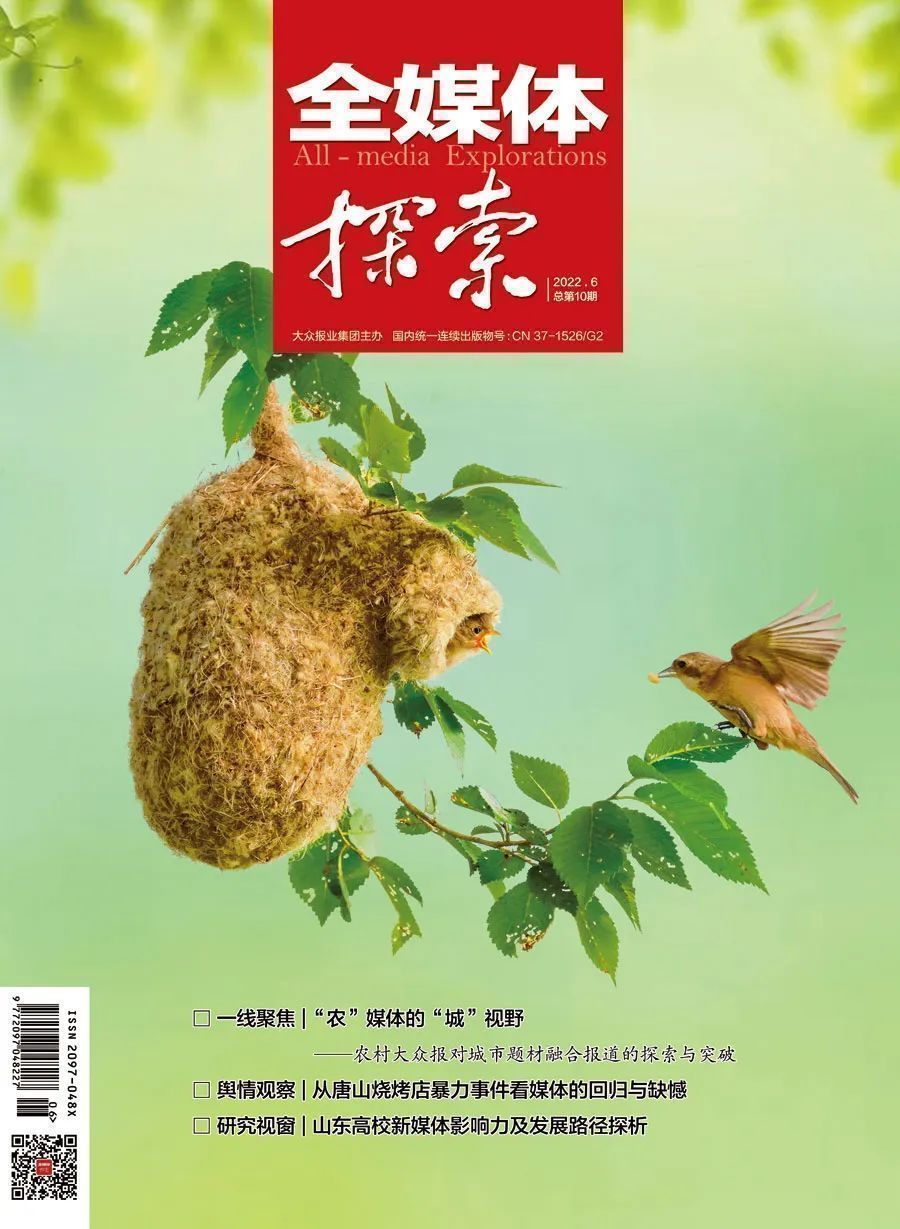
Author: Jinan Radio and TV Station Lu Ying and Zhang CuiliSource: All Media Explor...